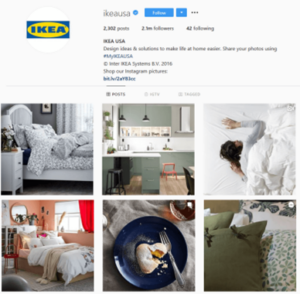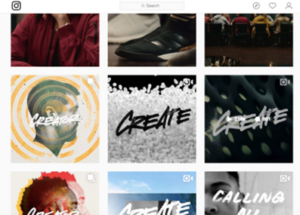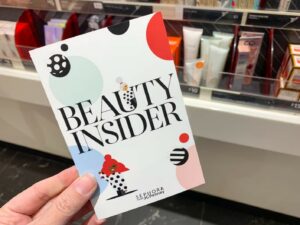
Article
5 tips to tap into your potential and remain relevant through Generation Z
Generation Z, born between the mid-1990s and mid-2010s, has unique characteristics and preferences when it comes to marketing. This generation group is made of digital natives, with technology playing a significant role in their lives, and who are more in touch with what’s happening in the world. Now, how can you target this demographic effectively and engage with them in a way that resonates?
1. Be where they are
Generation Z spends a significant amount of time on social media platforms like TikTok, Instagram, and Snapchat. To reach this audience, you need to have a strong presence on these platforms and create content that is tailored to their preferences. Short-form videos or behind-the-scenes glimpses tend to perform well for instance.
If we check out IKEA, we can see that it has effectively targeted this generation on Instagram and TikTok, as you’ll be able to find playful, colorful and insightful content. The brand’s focus on sustainability and affordable design has also helped appeal to Generation Z’s desire for socially responsible, humanized brands and budget-friendly products.

Need to concentrate your efforts on a type of support? Keep in mind that young people born from mid-to-late 1990s as until the early 2010s spend a significant amount of time on their mobile. Therefore, make sure that your website/content is optimized for this and consider investing in mobile app development or mobile-first website design.
2. Create shareable content
Generation Z loves to share content with their friends and family. Brands that create shareable content, such as memes, GIFs, and short videos, can reach a wider audience and go viral quickly.
A good use case here would be RyanAir. The company’s target audience includes a significant number of Generation Z travelers who are budget-conscious and value experiences over material possessions. Through its socials, Ryanair uses humor and relatable situations to engage with their audience. For instance, they’re known to create memes and short videos that highlight the frustrations of air travel in a lighthearted way.

Don’t be afraid to use humor! Gen Z’s tone of voice is very linked to it as this generation is often drawn to content that is funny or unexpected. Just be sure to strike the right tone, avoid anything that could be considered offensive or insensitive and make sure that it’s delivered in a way that feels authentic, relatable, relevant, and appropriate.
3. Leverage users to create content
Generation Z trusts content created by their peers more than traditional advertising. Encourage your audience to create and share their own content related to your brand or product and feature it on your social media channels or website.

Adidas, for instance, has effectively targeted Generation Z through its “Here to Create” campaign, which features shareable content such as inspiring athlete stories, workout videos, and product promotions. The campaign encourages fans to create and share their own content, fostering a sense of community and engagement.
Another good example could be Magnum. The brand’s “Magnum Pleasure Store” campaign encourages fans to share photos and videos of themselves customizing their own Magnum ice cream bars, generating a wealth of shareable content and fostering a sense of engagement and excitement.

Other examples of social proof include content such as reviews, testimonials, or social media mentions, which are great at demonstrating your product’s value and build a connection with your audience.
4. Personalize experiences
Generation Z expects personalized experiences from brands. Consider using data and analytics to tailor your marketing messages and product offerings to individual consumers.
A good source of inspiration could be Sephora and their “Beauty Insider” program that offers personalized product recommendations based on customers’ skin type, beauty preferences, and purchase history. This personalized approach helps the current generation of customers navigate the overwhelming world of beauty products and find products that truly resonate with them.

5. Embrace diversity and inclusivity
Generation Z is the most diverse generation in history, and they value inclusivity and diversity. When creating marketing content, make sure to showcase diversity in all its forms, including race, gender, sexuality, and ability. Always be mindful of using inclusive language, avoid stereotypes or tokenism and take the time to research and understand these differences to avoid faux pas.

H&M is working consistently on this topic for instance. Indeed, the brand has launched several campaigns promoting body positivity and featuring models of various sizes, ethnicities, and abilities. H&M also offers a range of sustainable and ethically produced clothing options, appealing to Generation Z’s values of social and environmental responsibility.
What should you take away from this?
To reach Generation Z effectively, businesses should focus on the content that they produce or share as well as think about where they position themselves. Often, companies still undervalue the potential that online platforms such as social media can offer. Now is the time to switch things up and test other approaches. Don’t be afraid to talk with your audience. Engage with them. Use a language that they understand and value. Generate reactions. Ultimately, it’s all about connection and building long-lasting relationships.
A last tip before you move away: Remember to remain agile. Generation Z’s preferences and interests can change quickly, so be prepared to pivot your marketing strategies as needed. If you need more information, advice on how to approach your customer base or want to run some tests to see the impact on your overall performance, don’t hesitate to check our cases or to contact our team!